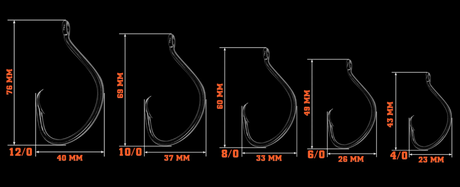Big Baits, Long Waits
Posted by Spencer Bauer on 19th Jan 2023
Big Baits, Long WAits
How do you find a fish that seemingly never sits still? The straightforward answer to this dilemma is that you need to keep moving too. In the words of tournament angler Eric Horton, “They’re everywhere and nowhere, simultaneously.” Blue cats in any body of water can be impressively frustrating to catch with any consistency, and lakes are no different. However, with a few guiding principles, you can set yourself up for success.
window.SHOGUN_IMAGE_ELEMENTS = window.SHOGUN_IMAGE_ELEMENTS || new Array(); window.SHOGUN_IMAGE_ELEMENTS.push({ hoverImage: '', uuid: 's-57a35056-addf-4f94-9c5e-da22c55681ee' })
The bite is one of the most exciting parts of fishing. When the bait happens to weigh three pounds, that level of excitement shoots through the roof. Fishing big baits brings about a feeling of anticipation that few other factors approach in fishing. However, to do it effectively, there’s a few hurdles you’ll have to traverse.
The reality of big baits is your hookup ratio is not always going to be great. A “nibble” on a bait that is 20 inches long is going to be impressive to say the least, and just because a rod folds doesn’t mean the fish ever had the hook. Some anglers try to solve this problem by tying rigs with multiple hooks. All too often the hook you attach to the bottom rotates back into the bait. Other times it will lay down flat along the side of the bait, resulting in a poor hookup, or no hookup at all. I’ve had mixed results rigging with multiple hooks.
The most efficient and overall effective method I’ve found is to simply use one large hook run through the lips of your bait. This hook location not only gives your hook a significant amount of exposure, but is a sturdy spot for securing the bait and preventing it from tearing off. A live three pound sucker struggles mightily hard, and baits pulling off the hook is a real problem.
Hook size is a matter of perception, even amongst tackle companies it seems. Many hooks advertised as a 10/0 or 12/0 are often no bigger than another company’s 8/0 size of a similar design. Whisker Seeker now offers a true 12/0 circle hook in the Triple Threat line up. It’s large enough to accommodate a monster live bait or chunk of cutbait, and still have enough gap between the hook point to rotate into the corner of a 100 pounder’s jaw.
Another tip for big baits, mainly big, active live baits, is to attach a planer board release clip on your hook keeper. If you would like to leave your reel in free spool with the clicker engaged, a large, lively bait will regularly pull line off. This leads to more snags, as well as an unnecessarily high heart rate. To solve this, after you have flipped the reel into free spool and engaged the clicker, clip the line into the release as lightly as possible. This will help keep your bait where you want it. They’ll still move around some, but not as bad as they would otherwise. When the monster catfish you’re looking for finally eats the bait, they pop the line from the clip, alerting you of a bite as they swim away with the clicker screaming.
Big baits don’t always mean big fish, but often they do. Even more importantly, devoting a rod or two to big baits builds anticipation and fun. Toss a few giant baits this year if you don’t already. You never know what is swimming around down there, and they’re a fun way to find out.
Patience is a virtue, at least that’s what they say. I’m not sure who “they” are. Apparently no one who’s tried to consistently catch daytime flatheads. If you can pull that feat off, you know patience is the last thing
window.SHOGUN_IMAGE_ELEMENTS = window.SHOGUN_IMAGE_ELEMENTS || new Array(); window.SHOGUN_IMAGE_ELEMENTS.push({ hoverImage: '', uuid: 's-b88d2fed-63fb-40ff-98e4-52f3330e1dcf' })
For more tips & content from Pro-Staffer Spencer Bauer visit
River Certified, watch videos on Youtube or follow him on Twitter & Instagram.

